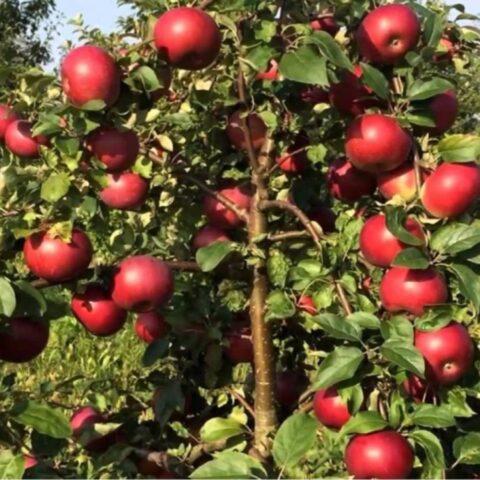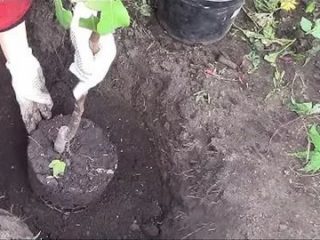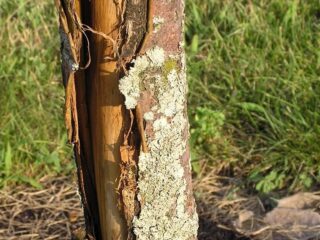Content
The Antey apple tree is a variety of Soviet selection, obtained in the early 1980s. It is distinguished by early fruiting - the first harvest is formed already in 2-3 years. The fruits are large and tasty, very shelf-stable, and can be stored until April. The variety is winter-hardy and can be grown in a variety of regions.
History of selection
The Antey apple tree is a winter variety. A team of scientists worked on the creation, including:
- Kovalenko G.G.;
- Kovalenko V.G.;
- Solonets G.K.;
- Evdokimenko V.M.;
- Yaroshevich I.V.
An application for permission to grow was submitted back in 1981. After passing successful tests, the variety was registered in the Russian register of selection achievements in 2000. Antey has also been listed in the Belarusian register since 1996.
Description of the Antey apple tree variety with photo
To grow the Antey apple tree at home on your site, you need to read the description of the variety. The main characteristics are presented below.
Crown
The apple tree of this variety is a medium-sized tree.It usually reaches a height of 2-2.5 m. The color is brown with a brownish tint, there is slight pubescence. The foliage is large, ovoid in shape, noticeably pointed. The color is dark green, there is a bluish coating. The veins do not protrude, they are immersed in the plate. Convex areas are noticeable between their branches. The petioles of the leaves are long, the stipules are lanceolate or crescent-shaped.
The crown has a sparsely tiered structure; it is not too dense, but moderately compact. Therefore, caring for it is quite simple - even novice gardeners can easily cope with formative pruning of the Antey apple tree. The shoots are dark brown, geniculate, round in shape, and can also be faceted when cut. Lentils are found in small quantities.
In this case, fruit buds begin to form already on two-year-old shoots and are laid annually. This is important to keep in mind when pruning.
Description of fruits
Apples of the Antey variety are quite large, sometimes very large. The weight usually reaches 150-200 g or more. It is noted that the fruits do not become small even under negative weather conditions. The apples are heterogeneous, often medium-sized (weight 120-130 g).

The fruits are large, marketable
The surface is green in color, round-conical in shape, slightly flattened, moderate ribbing. The cover color is very attractive - from rich red to burgundy. Moreover, it is blurred over the entire surface, which thanks to this acquires a ruddy color.
Almost all fruits have a noticeable waxy coating, so they have a bluish, matte tint. The saucers of the fruits of the Antey apple tree are deep, moderately wide, and have pronounced folds.The sepals are tightly closed, the calyxes are usually closed. It is very rare to see a half-open element.
The funnels of the fruits are deep and rusty. Antaeus apples have short stalks in the central place of the fruit bag, while other fruits have medium-sized stalks. The chambers are not separated from each other, they are connected through an axial cavity. The seeds of the Antei variety have clearly defined edges and a wedge-shaped shape. The color is dark brown. The hearts are small and bulb-shaped. The subcup tubes are short and funnel-shaped.
Characteristics of the Antey apple tree
Among the main characteristics of the Antey apple tree, gardeners are most often interested in taste, yield, and frost resistance. The most important parameters are described below.
Taste qualities
The fruits of the Antey apple tree are valued for their balanced sweet and sour taste with a pleasant fragrant aroma. At tastings they consistently receive a high rating - 4.3 points out of 5. The fruits have a universal purpose. They can be eaten fresh, as well as used for preparations (jams, marmalade, compotes, dried apples, etc.).
Ripening time for the Antey apple tree
It is customary to harvest the Antey apple tree from the last ten days of September to the first days of October. At this moment, technical ripeness occurs. After another two months, i.e. By the beginning of December, consumer ripeness begins.
The tree bears fruit from 2-3 seasons annually, without interruption. The harvest yield is friendly. Fruit buds are formed every year, which guarantees stable fruiting.
Productivity
The Antey apple tree is quite productive. From one mature tree you can remove up to 50 kg of fruit.When grown under industrial conditions, the yield is 40 tons per hectare, if you plant a garden according to the 5 * 3 m scheme and grow on a medium-sized rootstock. Thanks to these indicators, the Antey variety can be bred both for yourself and for sale.

Subject to proper growing conditions, the yield reaches 50 kg per tree
Frost resistance of apple tree Antey
Another important characteristic of the Antey apple variety is frost resistance. The indicator is very high, the trees can withstand even harsh winters well. Therefore, they can be grown in different regions, including northern ones.
Pollinators
One of the disadvantages of the Antey apple tree is that it is a self-sterile variety. Therefore, pollinators must be planted on the site. We can recommend crops such as Anise and Pepin saffron. Welsey and Autumn Striped are also suitable. Other varieties are also acceptable, the main thing is that their flowering periods coincide.
Where is it grown?
The Antey apple tree was originally bred for the middle zone and the North-West. The crop can also be grown in the Volga and Black Earth regions, southern regions. Since winter hardiness is high, it can also be cultivated in the Southern Urals.
Disease resistance
The Antey apple tree variety has fairly good resistance to diseases and pests, but can suffer from scab. Therefore, preventive treatment with drugs and regular inspection of trees are mandatory. If necessary, repeat spraying with fungicides and insecticides. At the fruiting stage, folk remedies and biological preparations are used.
Advantages and disadvantages
The Antey variety apple tree is popular among both summer residents and farmers. The fruits are marketable, shelf-stable and transportable. They have an attractive appearance and pleasant taste.They are quite resistant to diseases and can withstand even severe winter frosts.

The Antey variety is valued for its large and beautiful fruits with a pleasant taste.
Pros:
- good yield;
- early fruiting - apples are formed in the third year;
- frost resistance;
- excellent keeping quality;
- transportability;
- stable fruiting.
Minuses:
- The variety is self-sterile - the presence of pollinators is mandatory;
- no immunity to scab;
- fruits may vary in size.
Planting an Antey apple tree
It is advisable to plan the planting of the Antey apple tree in the fall - from late September to mid-October. But in regions with frosty winters, it is better to do this in the first half of April. The place for the garden should be well-lit, spacious and dry, without stagnant water in the lowlands.
When landing, proceed in the standard way:
- Mark holes at a distance of at least 4 m.
- Dig holes with a diameter and depth of 80*100 cm.
- Place stones for drainage.
- Lay garden soil with compost, peat and sand in a ratio of 2:1:1:1.
- Place the seedling in the center, leaving the root collar 5-7 cm above the surface.
- Tied to a peg.
- Water and mulch.
Caring for an Antey apple tree
Caring for the Antaeus variety is standard. Young seedlings are watered weekly, mature trees - up to twice a month (if there is no rain). Use only settled water, not too cold. Fertilizing should be applied every spring (nitrogen compounds), during budding and ovary formation (potassium sulfate, superphosphate). It is recommended to alternate organic matter with mineral fertilizers.
The soil in the tree trunk circle is periodically loosened and weeded. Every spring, before the beginning of April, it is necessary to do sanitary and formative pruning of the Antey apple tree.At the same time, preventive treatment against diseases and pests is carried out.
Collection and storage
The Antey apple tree is harvested at the very end of September or at the beginning of October. This is a late winter variety, consumption begins only in late November - early December. Can be stored in basements, cellars and other utility rooms under the following conditions:
- temperature in the range of 0-6 degrees Celsius;
- humidity up to 70%;
- darkness;
- free air circulation, ventilation.

Fruits can be stored until April
Antey apples can last up to 6-7 months. If harvested in October, they are edible until at least April. Therefore, they can be used both for personal purposes and for sale.
Conclusion
The Antey apple tree is one of the best varieties for both home and commercial cultivation. A tree with a thinned crown, compact, undemanding to care. Gives stable yields even in cool summers. Apples are a universal group, suitable for all types of processing.
Reviews from gardeners about the Antey apple tree








